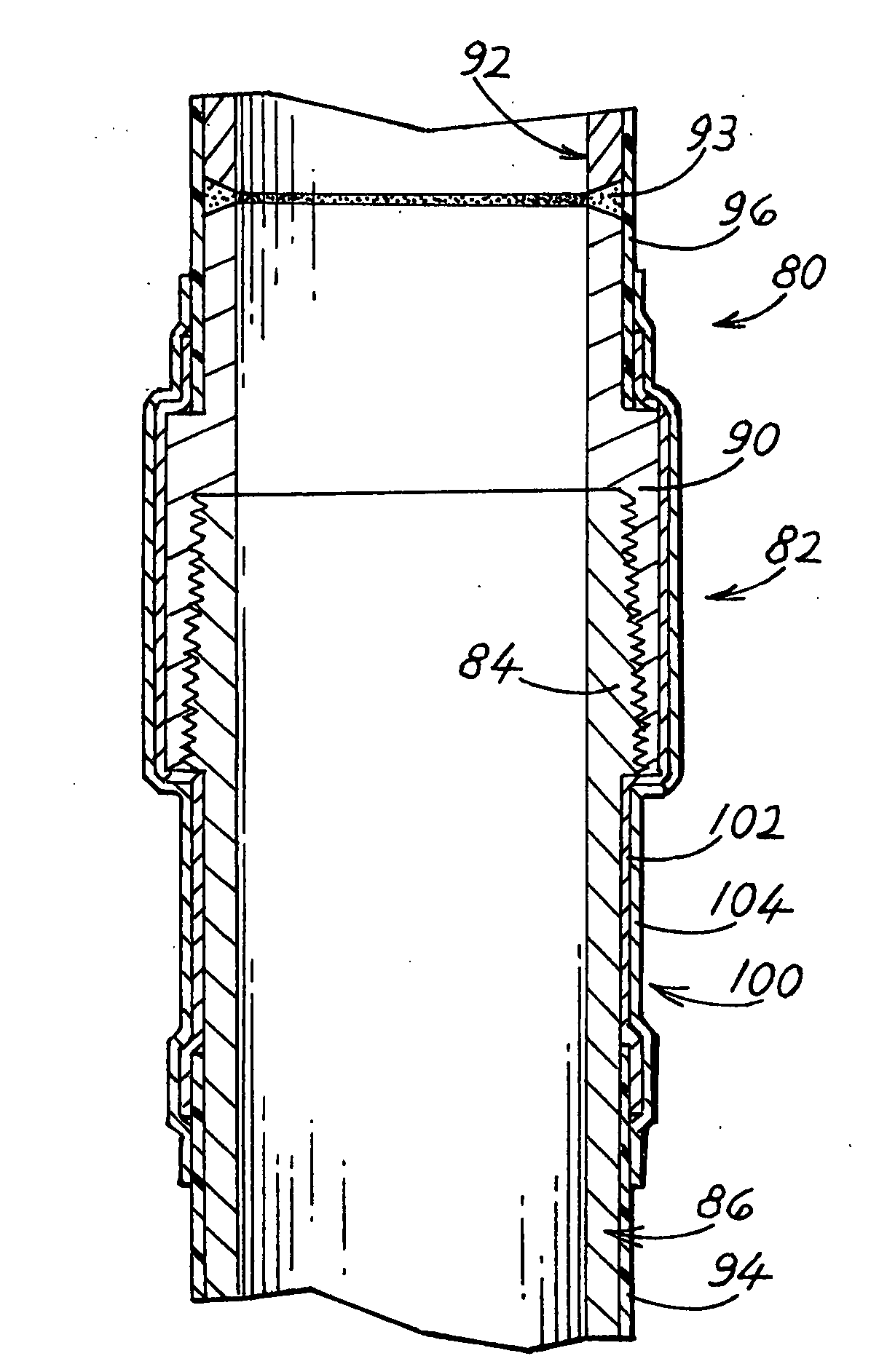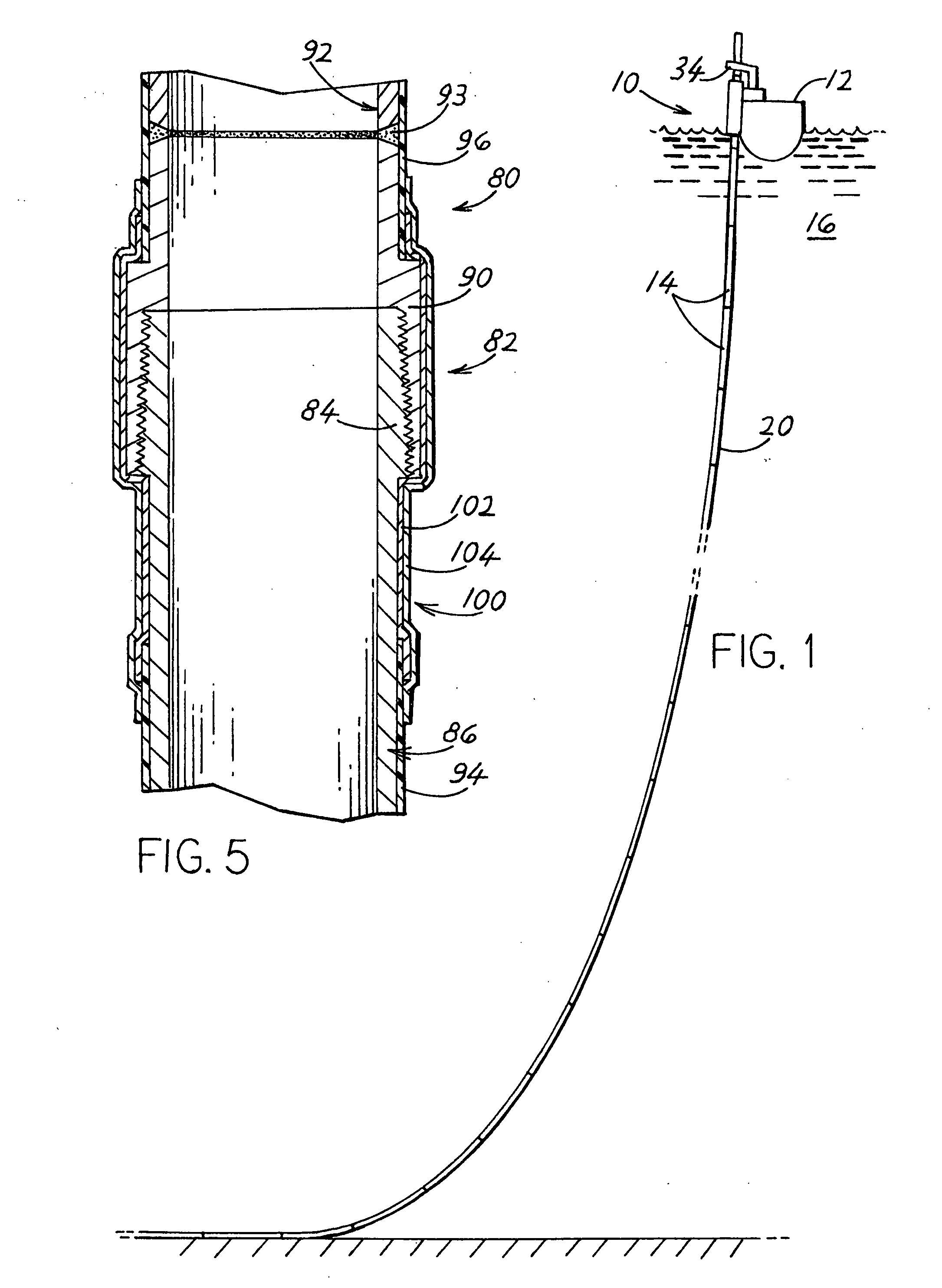Insulated pipe joint
a technology of insulated pipes and joints, applied in the direction of hose connections, manufacturing tools, mechanical equipment, etc., can solve the problems of forming wax or hydrates in the pipeline, damage to the surface of the pipe, and the coating applied to the surface that must be gripped by tools such as jaws, etc., to achieve convenient handling, low cost, and reliable coating
- Summary
- Abstract
- Description
- Claims
- Application Information
AI Technical Summary
Benefits of technology
Problems solved by technology
Method used
Image
Examples
Embodiment Construction
[0014]FIG. 1 shows an installation system 10 which includes an installation structure in the form of a platform or vessel 12 that is in the process of connecting pipe sections 14 in tandem and lowering them into the sea 16. The pipeline 20 formed by the tandem-connected pipe sections is to be used to carry hydrocarbons, as to carry hydrocarbons from an undersea well to a production vessel that will replace the installation vessel, or from a tanker to a receiving terminal, or in other applications. The pipe sections are formed of steel pipe and have coverings, or coatings that are combined with cathode protection to avoid corrosion in sea water. In many cases, the coating is also useful as a thermal insulator to prevent cooling of hydrocarbons passing though the pipeline, so as to avoid the formation of wax and hydrates that could block the pipeline.
[0015]The pipeline usually includes much more than ten pipe sections connected in tandem. Each pipe section typically has a length of 40...
PUM
| Property | Measurement | Unit |
|---|---|---|
| thickness | aaaaa | aaaaa |
| thickness | aaaaa | aaaaa |
| diameter | aaaaa | aaaaa |
Abstract
Description
Claims
Application Information
 Login to View More
Login to View More - R&D
- Intellectual Property
- Life Sciences
- Materials
- Tech Scout
- Unparalleled Data Quality
- Higher Quality Content
- 60% Fewer Hallucinations
Browse by: Latest US Patents, China's latest patents, Technical Efficacy Thesaurus, Application Domain, Technology Topic, Popular Technical Reports.
© 2025 PatSnap. All rights reserved.Legal|Privacy policy|Modern Slavery Act Transparency Statement|Sitemap|About US| Contact US: help@patsnap.com



